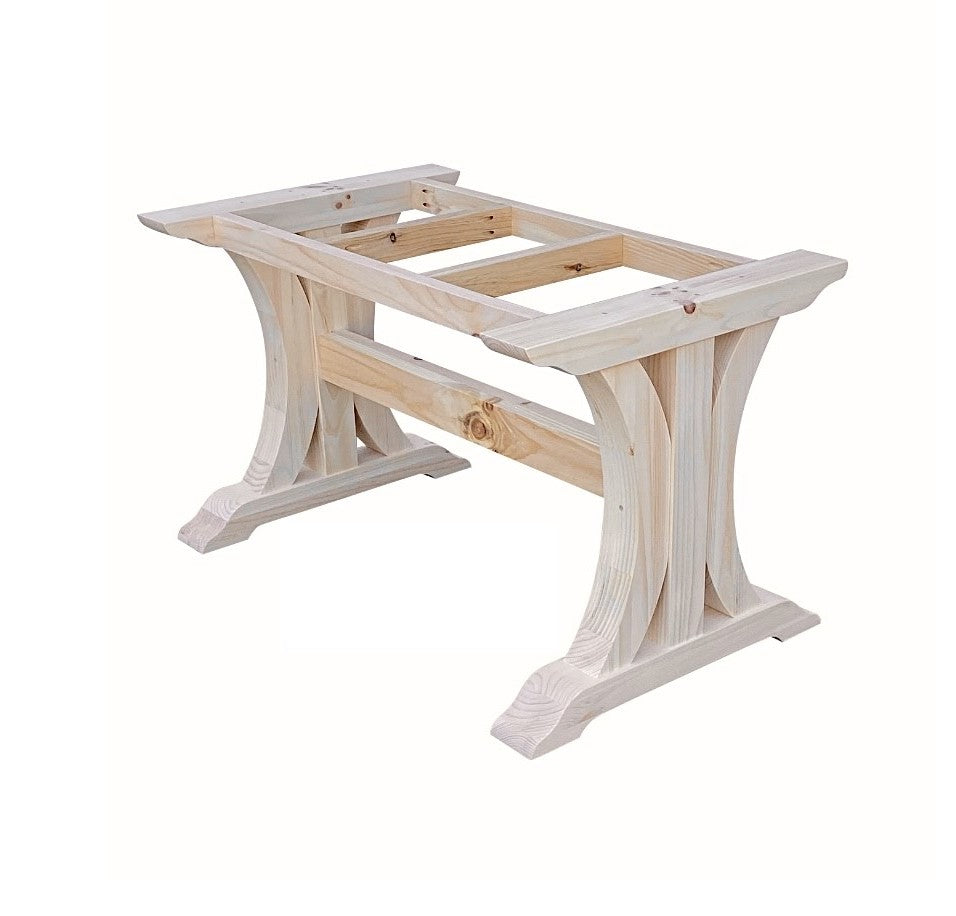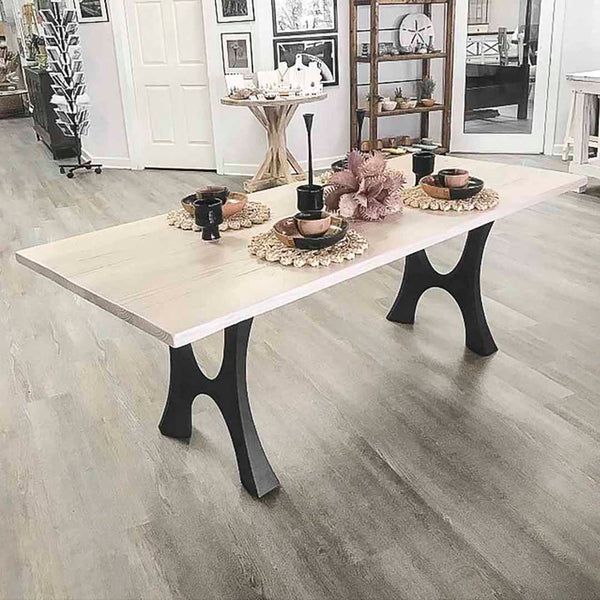How to Choose the Perfect Dining Room Table Legs for Your Home
How to Choose the Perfect Dining Room Table Legs for Your Home
Blog Article
From Standard to Modern: Discover the Perfect Dining Area Table Legs for Your Style
The selection of eating space table legs plays a crucial duty in defining the overall personality of your space, linking the void in between traditional workmanship and contemporary appearances. While traditional designs such as cabriole and turned legs stimulate a feeling of classic class, modern designs like barrette and geometric options offer an opportunity for striking visual interest. Examining the best equilibrium in between these styles needs a nuanced understanding of your existing decoration and individual taste. As you take into consideration these components, the inquiry stays: exactly how can you effortlessly incorporate these varied leg styles to develop a harmonious eating experience?
Understanding Table Leg Styles
The range of dining-room table leg designs can significantly influence both the visual appeals and performance of the room. Each leg style contributes one-of-a-kind visual components and useful features, satisfying varied layout choices and use demands. Recognizing these designs is important for selecting the appropriate table that aligns with your overall indoor layout vision.
As an example, conical legs use a clean, traditional look that can improve a space's beauty, while pedestal bases provide security and make the most of legroom, making them perfect for smaller sized spaces. Barrette legs, a hallmark of mid-century modern-day layout, present a commercial style, enabling a ventilated, open feeling. Likewise, trestle legs stimulate rustic charm, giving durable support and a feeling of timelessness.
Wooden legs can bring warmth and structure, whereas metal alternatives usually share a smooth, modern vibe. Eventually, recognizing table leg styles is necessary for producing a natural eating area that mirrors individual design while making certain usefulness and convenience.
Traditional Table Leg Options
When picking dining area table legs, typical alternatives commonly personify classic sophistication and craftsmanship. These styles mirror an abundant heritage and a dedication to high quality, making them perfect for those who value classic appearances.
One of the most famous traditional leg designs is the cabriole leg, defined by its elegant rounded shape. This layout typically features ornamental carvings and is most typically found in Queen Anne and Chippendale furnishings. One more preferred option is the turned leg, which boasts a series of smooth, rounded shapes that supply a classic appearance while keeping security.
In addition, the straight leg, while basic, provides a strong and unadorned structure that can mix seamlessly with a selection of tabletop styles. For those drawn to ornate detailing, claw-and-ball feet legs stimulate a sense of grandeur and can work as a magnificent centerpiece in any dining area.
Lastly, pedestal bases, although not strictly legs, provide a different conventional alternative that permits for ample legroom and can be beautifully carved. Each of these standard see here leg designs adds to the total ambiance of a dining-room, marrying feature with aesthetic allure.

Modern Table Leg Designs
Modern table leg designs provide a diverse variety of designs that stress tidy lines and cutting-edge materials. These designs typically focus on performance while serving as striking centerpieces within a dining space. Minimal appearances prevail, with legs crafted from materials such as metal, glass, and crafted wood, which add to a airy and modern feeling.
One prominent layout is the barrette leg, identified by its slim, tapered framework that offers stability without overwhelming the tabletop (dining room table legs). This style is commonly located in mid-century modern-day furnishings and can easily enhance different eating table forms. One more fad is making use of geometric forms, where legs may tackle angular or asymmetrical forms, adding visual interest and a touch of virtuosity

Mixing Styles for Unique Rooms
Frequently, homeowners look for to develop one-of-a-kind dining spaces that mirror their personal design by blending various design components. This strategy enables the unification of varied appearances, resulting in a harmonious yet distinct setting. Pairing a rustic wood table with smooth, modern-day metal legs can create a captivating comparison that raises the space's general appeal.
Furthermore, incorporating vintage table legs with contemporary tabletops can evoke a feeling of history while maintaining a contemporary perceptiveness. Such combinations not only showcase private taste yet also urge imagination, permitting house owners to curate a room that feels both personal and inviting.
Color plays an essential function in this blending process; selecting table legs that complement or comparison with the existing color pattern can boost aesthetic interest. Whitewashed legs can soften the boldness of a dark table surface area, creating a well balanced aesthetic.
Tips for Choosing the Right Legs
Selecting the right table legs is vital for achieving both performance and visual allure in your dining space. Begin by thinking about the total style of your room. Standard find out here now setups take advantage of legs that feature complex carvings or transformed styles, while modern rooms may ask for streamlined, minimalist styles.
Following, analyze the height and stability of the legs. dining room table legs. Standard eating tables vary in between 28 to find out here now 30 inches in height, so make sure the legs enhance this dimension for convenience. In addition, durable products, such as wood or steel, can improve stability and long life
Examine the leg shape too-- alternatives consist of straight, tapered, or stand designs. Straight legs provide a traditional appearance, while tapered legs can include a touch of elegance. Pedestal bases give adequate legroom and are excellent for smaller spaces.
Conclusion
In summary, selecting the suitable dining space table legs needs mindful consideration of both conventional and modern styles. By integrating leg style, elevation, and product with the overall decor, a natural and welcoming environment can be accomplished.
The variety of dining area table leg designs can dramatically influence both the appearances and capability of the space. Ultimately, comprehending table leg styles is crucial for producing a cohesive dining area that mirrors personal style while ensuring practicality and convenience.One of the most renowned conventional leg styles is the cabriole leg, identified by its graceful bent form. Straight legs offer a classic look, while tapered legs can include a touch of sophistication.In summary, selecting the suitable dining space table legs requires careful factor to consider of both typical and modern-day styles.
Report this page